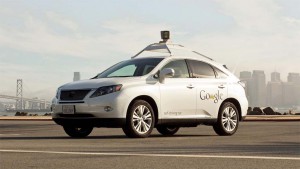Google has experienced 11 minor traffic accidents since it began researching autonomous vehicle technology six years ago, the automaker has confirmed. But in none of the crashes were the self-driving vehicles at fault, the tech giant said.
Google released the information a day after a report was published by the Associated Press examining the safety record of the 58 autonomous vehicles operating in the State of California. Proponents of self-driving technology contend it will significantly reduce the number of crashes, injuries and fatalities on U.S. roads.
In its initial report, the AP said it had learned of four accidents involving autonomous vehicles: three operated by Google, considered one of the leaders in the emerging field, another run by automotive supplier Delphi.
The update shows even more of the vehicles have been involved in collisions, though Chris Urmson, the director of Google’s autonomous program told the news service that all of the accidents were minor, involving “light damage, no injuries. He added that, “Not once was the self-driving car the cause of the accident.”
(Click Here for our original report on the autonomous vehicle crashes.)
Proponents have never claimed that autonomous vehicles would be 100% crash-free. There is, for example, little that can be done when one vehicle is waiting at a red light and the following vehicle fails to stop. But specific details of the 11 crashes were not initially released by Google, and the California Department of Motor Vehicles would not make that information available, either, citing confidentiality.
Urmson subsequently posted more details online, indicating seven of the crashes, in fact, were rear-enders. The others involved being sideswiped, or “hit by a car rolling through a stop sign.” He noted eight of crashes occurred on city streets, the others on highways.
Urmson did note that Google has so far logged 1.7 million miles of testing in its autonomous vehicle fleet, including nearly 1 million miles in self-driving mode. And in his online posting, the Google executive said the autonomous technology allowed the vehicles to avoid other potential collisions with vehicles, pedestrians and bicyclists.
(What’s it like to drive an autonomous, 70,000 pound truck? Click Here to find out.)
The tech giant has been using converted Toyota and Lexus vehicles for its initial testing, but it is beginning to roll out a fleet of specially designed “Google cars,” produced by Michigan supplier Rousch, that will expand its test program. The first of the 100 vehicles will include steering wheel and pedals but most will offer nothing more than an emergency shutoff button for passengers.
Technically, that is not yet legal in California or any other state, such as Nevada, permitting autonomous vehicle testing. And there is a significant debate about how long it would take to reach the point where driverless vehicles could safely take to the highways.
Initial laws require that a driver be stationed behind the wheel, ready to take over in the event of a problem.
Indeed, Delphi said that the crash involving a 2014 Audi SQ5 occurred when the vehicle was operating in manual mode, not autonomously. Spokesperson Kristen Kinley told the AP the Audi was broadsided while waiting to make a left turn.
An AP survey of companies testing autonomous vehicles on California roads found that none of the other five have experienced crashes.
(New JD Power study finds autonomous vehicles resonating with American drivers. Click Here for details.)


…and the number of autonomous accidents are already climbing. Unfortunately this is terrible results for prototype AVs. The rush-to-market mentality is not good nor appropriate for these vehicles. There is plenty of time to get AVs right instead of doing on-the-job-learning via accidents.